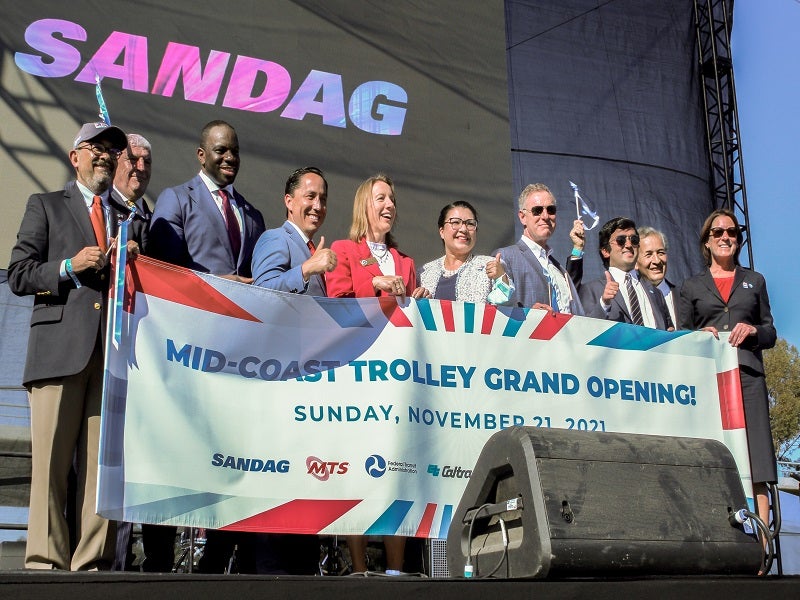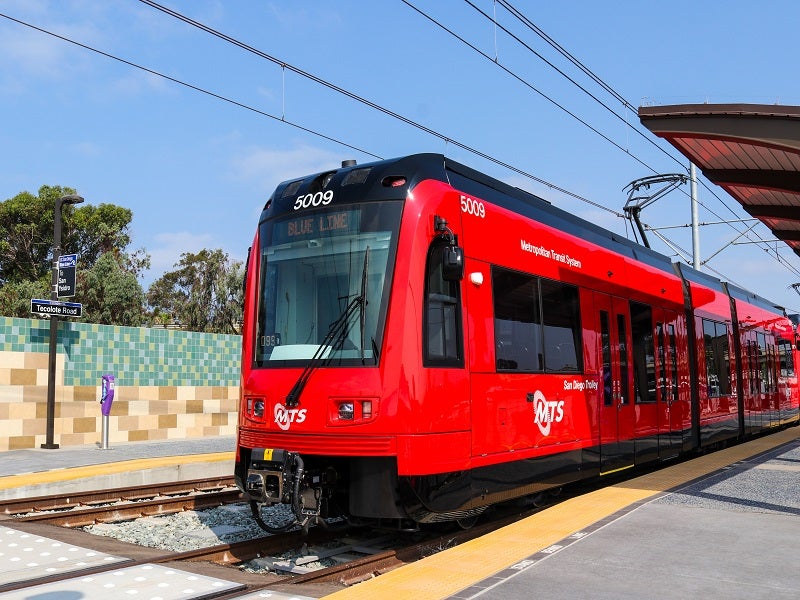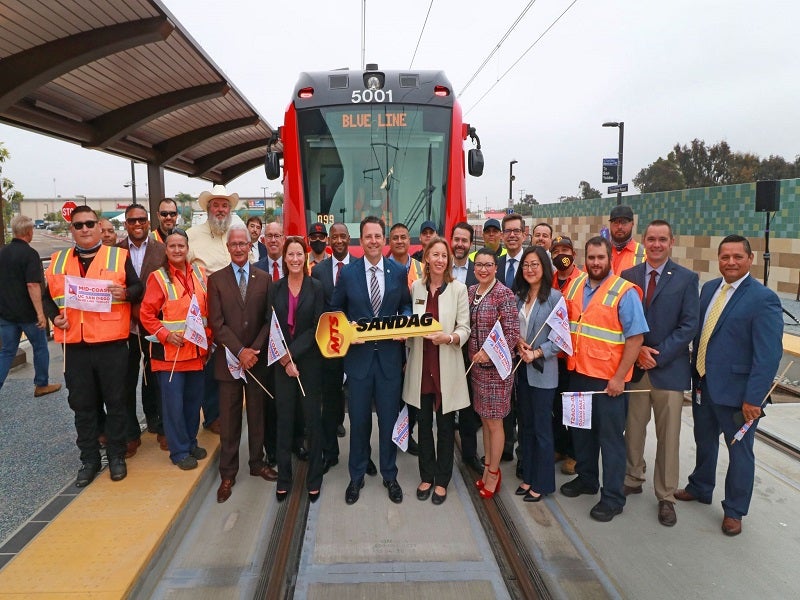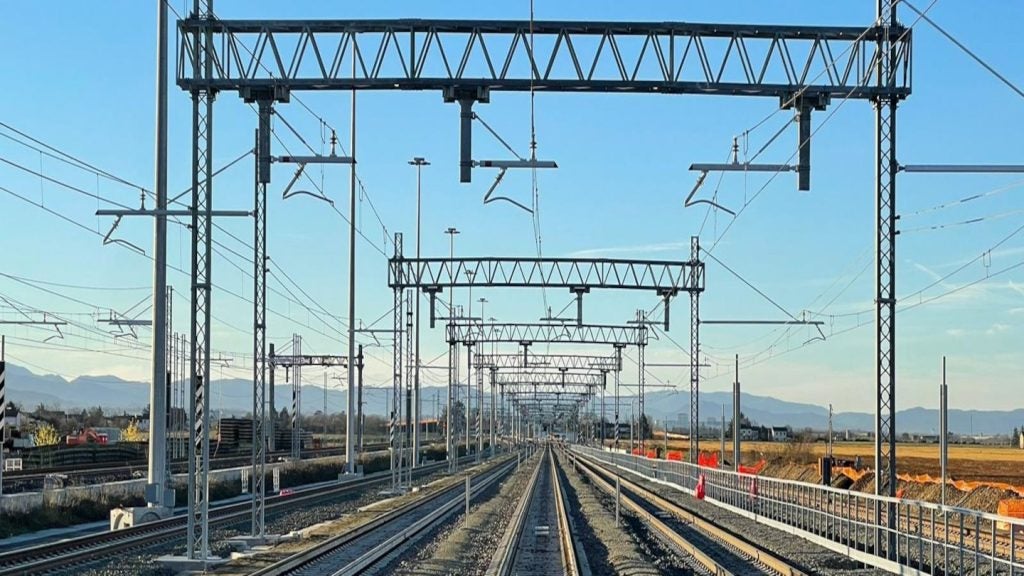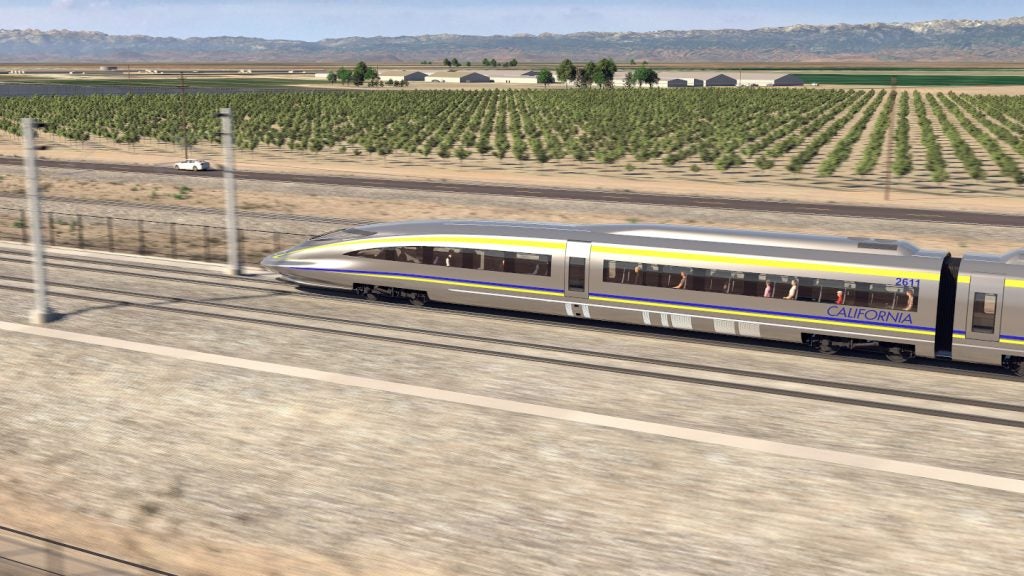Ground was broken for the California high-speed rail project in Fresno in January 2015.
The Mid-Coast Trolley project is a 17.7km-long extension to the existing Blue Line, which is a light rail line in the San Diego Trolley system in California, US. Built by the San Diego Association of Governments (SANDAG), the new extension connects Old Town, the University of California, San Diego (UCSD), and Westfield UTC.
The priority transit project was implemented to increase the capacity of the light rail transit corridor, improve mobility in the area, and minimise the congestion on freeways and roadways.
The new Trolley extension increased the San Diego Blue Line’s capacity by 20%. It is intended to serve the growing commuter traffic in the region, as the densities of population and employment in the area are expected to increase by 19% and 12%, respectively, by 2030.
The San Diego Metropolitan Transit System (MTS), the operator, estimated that approximately 24,000 trips were taken from the nine new stops along the extension on opening day, with the UCSD Central Campus and UTC stations alone accounting for over 16,000 trips.
Mid-Coast Trolley project route and station details
The SANDAG board of directors approved the Mid-Coast Trolley route, which was concluded to be the locally preferred alternative (LPA), in July 2010.
The extension route originates just to the north of the Old Town Transit Centre, and continues along the existing railroad right-of-way and beside the Interstate 5 (I-5) to Gilman Drive. It intersects the I-5 twice, just south of Nobel Drive and near Voigt Drive, before reaching the UCSD neighbourhood, Genesee Avenue, and the Westfield UTC transit centre.
New stations were built at Tecolote Road, Clairemont Drive, Balboa Avenue, Nobel Drive, VA Medical Centre, Pepper Canyon, serving UCSD west campus; Voigt Drive, which serves UCSD east campus; Executive Drive, and the Terminus Station at the Westfield UTC.
Mid-Coast Trolley project construction
The SANDAG board of directors gave environmental clearance to the Mid-Coast Corridor Project in November 2014.
Pre-construction activities began in early 2016 and major construction started in 2016, which was completed in the second half of 2021.
Financing for the LRT extension
The light rail extension project was developed with an estimated investment of $2.1bn. The full funding grant agreement (FFGA) of the Federal Transit Administration’s (FTA’s) New Starts programme was expected to generate 50% of funds for the project. The remaining funds were to be generated from the region’s TransNet half-cent sales tax for transportation.
TransNet will also provide operating funds for the extension until 2048.
Benefits of the Blue Line extension
The Mid-Coast Trolley project provides commuters with a transfer-free ride from the international border and residential areas south of Downtown San Diego, to University City. It is expected to be used by an additional 21,000 daily commuters a day.
The extension provides improved transit connections to University City, which is a busy employment centre and densely populated area similar to Downtown San Diego. It also ensures efficient trolley service throughout the Mid-Coast corridor.
Contractors involved
Mid Coast Transit Constructors, a joint venture of Stacy & Witbeck, Skanska USA, and Herzog Contracting Corporation, was appointed as the general contractor for the project in May 2014.
Kleinfelder provided geotechnical recommendations, fault study investigation, seismic design, and hazmat environmental services for the project.
In September 2016, Mid-Coast Transit Constructors received a $921.8m contract for the construction of the project. Parsons Brinkerhoff, Kimley Horn, and HDR were responsible for designing the Mid-Coast Trolley project.
Siemens Mobility supplied 45 new Trolleys to support the Mid-Coast light rail extension service.

